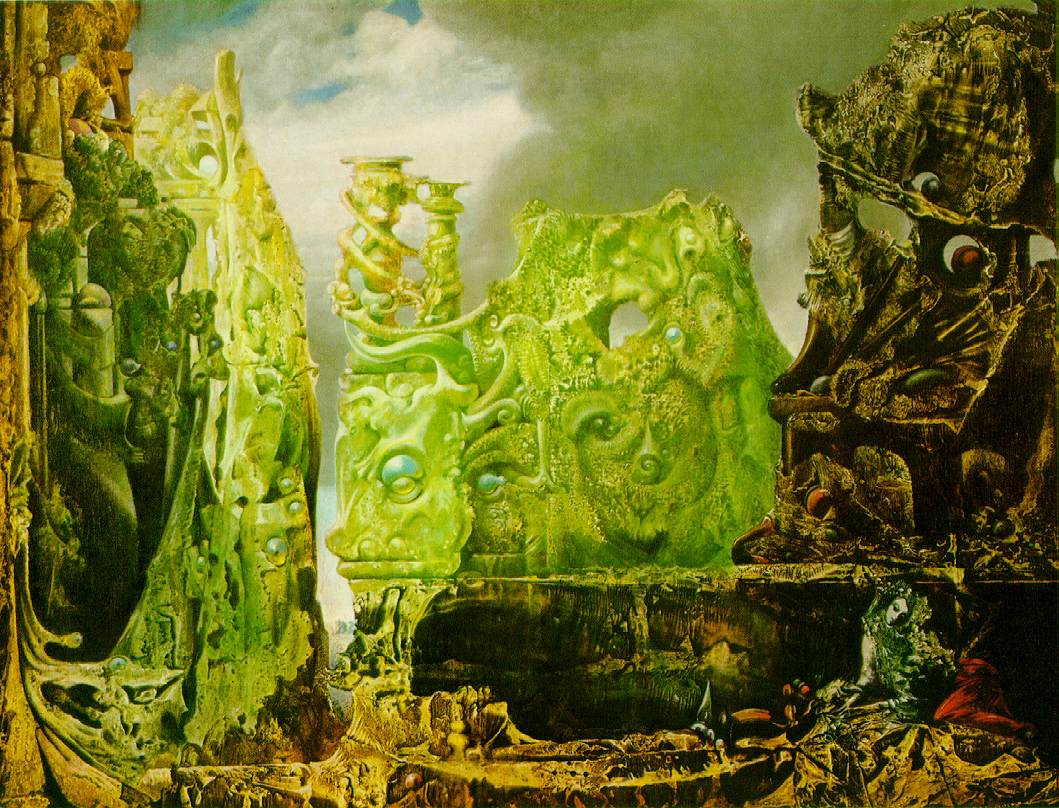



The Eye of Silence
oil on canvas • 108 x 141 cm
The painting is a view of what appears to be a calm, reflective lake surrounded by green and brown shapes that simultaneously suggest foliage, stone ruins, and natural rock formations. In the right foreground sits a sphinx-like human figure; the background sky is filled with dark, ominous clouds. Marked by a frozen, poetic, even eerie sensibility, Ernst's painting is meant to be not direct or literal but provocative and suggestive, inciting investigation of symbols, imagery, and emotions stored in the human psyche that the imagery evokes. Influenced by Freud's notion of dreams as symbolic pathways into the mind, Ernst and his fellow Surrealists explored the unconscious and the irrational, believing repression of the human imagination and subconscious desires to be connected to the chaos of modern life. Serving as a still image from a dream fragment, the painting's haunting and unsettling imagery also suggests Ernst's own experiences of dislocation and alienation during the war.
 Max Ernst
Max Ernst